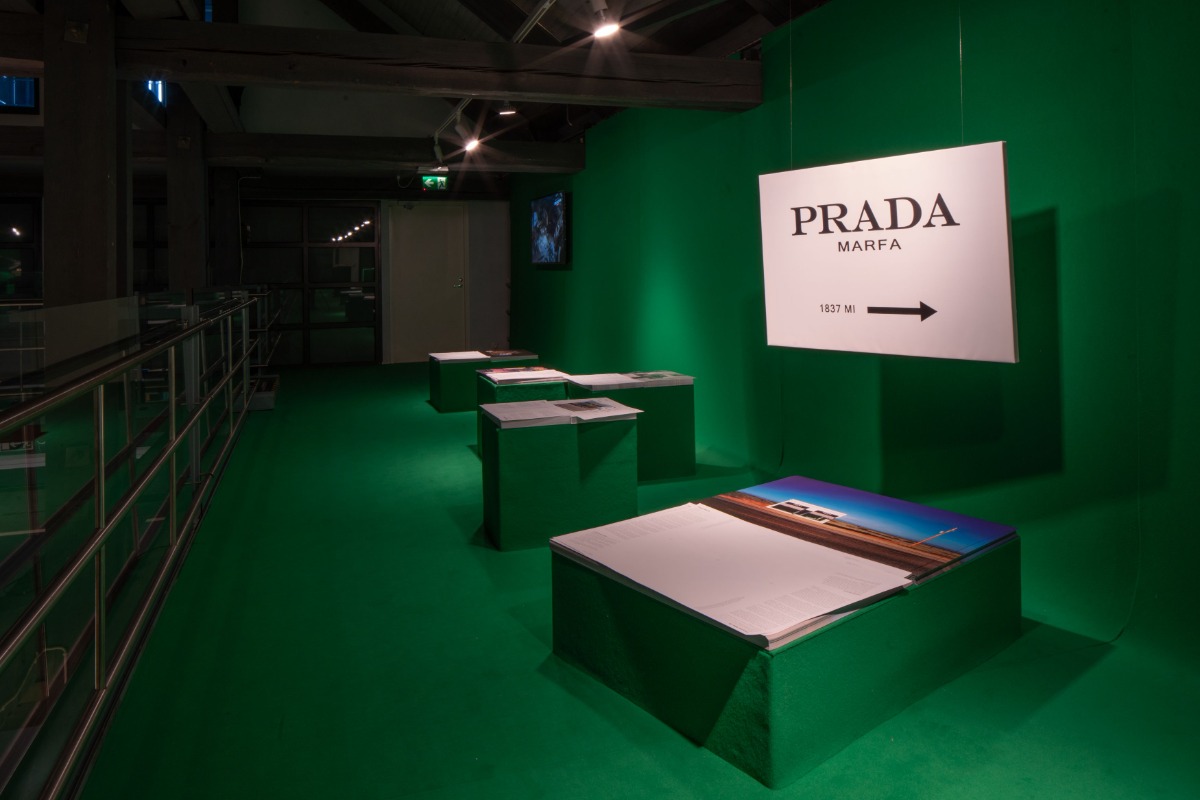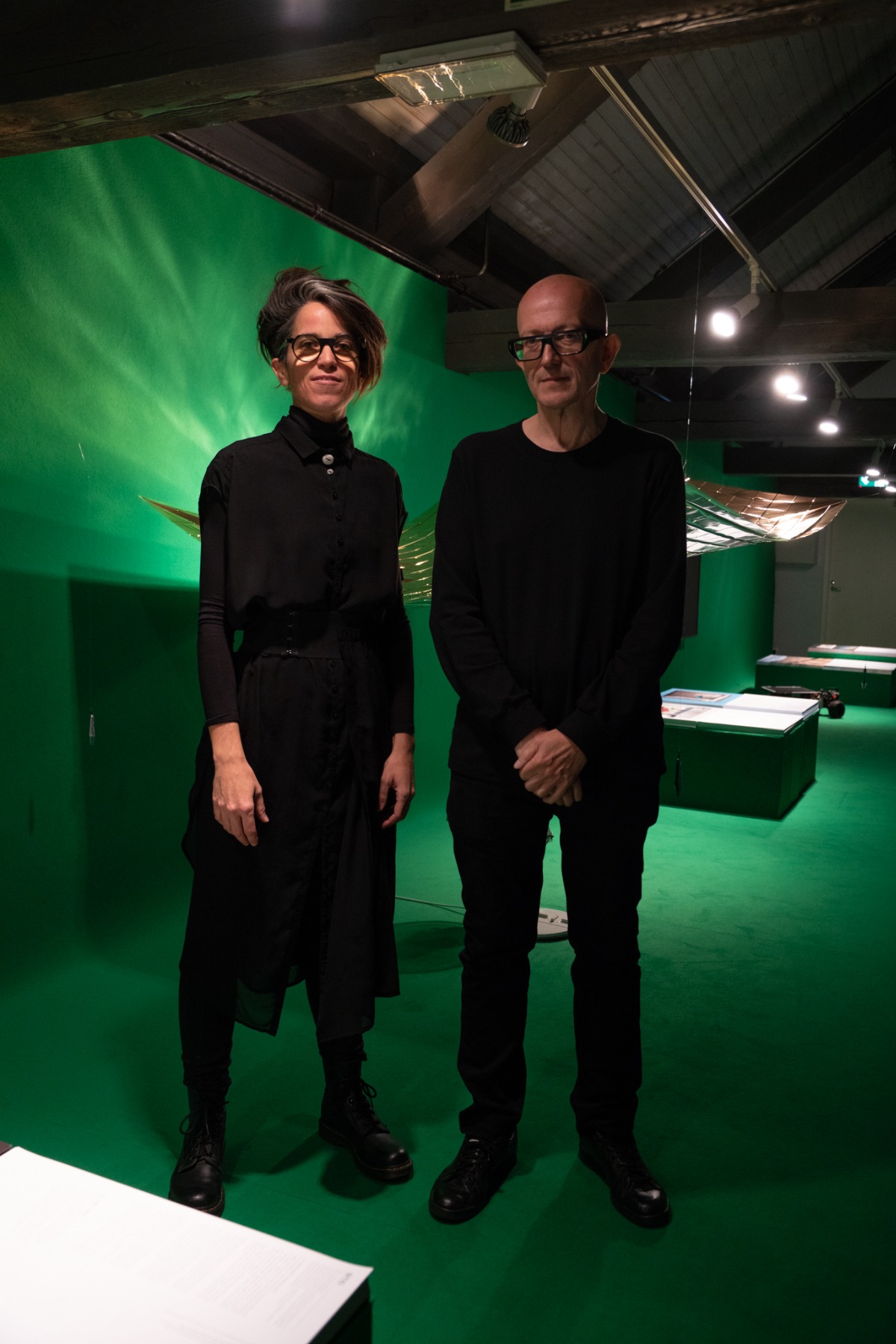
An Oasis in a Desert of Hostility
Q&A with Irma Arribas and Erich Weiss, curators of the exhibition OASIS at the Estonian Museum of Architecture in Tallinn
Today, the role of architects and designers in solving global problems is greater than ever. They have to take into account the damage that has already been done and think about building a sustainable and safe future. With that in mind, till January 9, 2022, the Estonian Museum of Architecture in Tallinn is hosting OASIS, an exhibition that brings together various projects by designers, artists and architects who have created contemporary micro-climates for survival in a hostile environment. OASIS presents nine case studies of surroundings and situations that could be understood as ‘landscapes of care’ – projects where the authors have used specific tools and infrastructures in answer to a specific context. The exhibition is being curated by Irma Arribas, a Barcelona-based architect and visual artist, and Erich Weiss, a freelance video artist and curator from Belgium.
Irma Arribas and Erich Weiss. Photo: Evert Palmets
Arterritory.com had the chance to interview both curators, starting the conversation off with the question of the essential role of architects and designers in solving global problems. Irma Arribas and Erich Weiss reflected on this by emphasizing the communicative aspect of architecture and design: ‘Design and architecture are mediums of communication and not just innocent scenarios. They transmit values, stereotypes, classifications, margins and possibilities to us. This act of communication with design through the action of use, and with space through the action of being, apart from transmitting information through inspiration and emotions, defines and shape the agents that are involved in the communication. This responsibility and capacity of architecture and design as a medium of communication must be well taken. Not only do functional, practical and aesthetic actions surround these disciplines, but also moral, psychological and sociological ones.’ Arribas and Weiss are convinced that design and architecture are political issues, and that some of the key questions that should be asked before starting any design or architecture project include: What kind of contracts do we want to generate for this society, for this planet? – Human dominance relationships? How do we want to be designed? And according to which values?
Photo: Evert Palmets
What was your approach as the curators of this exhibition? How did you select the participants?
The whole concept of the exhibition is based on a proposal we had initially made while preparing a project for curating the Tallinn Architecture Biennale. Our idea was to present projects related to our relationship with the outside. We imagined a biennale that would happen only outdoors, inviting architects and designers to present projects that fit that theme. But the title chosen for the biennale, (‘Breaking the waves: from the outside looking in’) motivated us to also look for the visions of so-called outsiders, such as artists or creative producers.
This is how we discovered some of the projects we finally selected for the OASIS exhibition – outsiders in terms of extreme and radical spaces, but also related with extreme art, design, and architectural practices. On the other hand, we are all experimenting during the pandemic, and which has also opened up the desire to go out, to the exterior, to another fertile landscape, to an oasis – to escape from claustrophobic interiors.
Taking all these inputs, we focused OASIS as a fertile dimension or socio-physical environment where contemporary society tends to go to. We organized these ‘oases’ into ten different categories: economic, social, productive, consumer, private, virtual, social, collaborative, cultural and refuge ‘oases’.
Having become acquainted with the concepts presented in the exhibition, it seems that some of the solutions offered in the exhibition are quite realistic and down-to-earth, while others are a bit ‘dreamy’.
The projects we’re presenting have been made by all types of people: architects with a classical career, but also visual artists, video game designers, photographers, and even companies within the tourist sector. Some are down-to-earth, realistic, or even commercial, while others are utopian, dreamlike fiction projects. But what they all have in common is that they present complex and fascinating situations or spaces with the intent of creating a (temporary) paradise or refuge with special relationships between humans, non-humans and processes.
Photo: Evert Palmets
Regarding the selection of authors involved in the exhibition, what kind of actions are they taking outside of this exhibition to promote a safe and sustainable future? Could you highlight anything special?
The philosophy behind each project is very different. The intentions of each of the selected authors are very diverse and depend on the context in which they presented their project.
Some of the people in our selection are artists who made projects in which they took the opportunity to express their ideas about ecology, or how we humans are behaving in the present and making efforts to build on constructing a sustainable future. Some of them have explicit political connotations.
Other projects are very realistic proposals (for example, ‘Solo Houses’ and the ‘Ruumu Adventure Center’), which offer users direct experiences and the unique opportunity to test the efficiency of the presented solutions or the advantages offered by the project.
Also, we would like to highlight (as a test case) the project ‘AZ-West’ by Andrea Zittel. It functions as a real laboratory where people are invited to rethink and effectively try out possible solutions or new attitudes. It is a space where people transform utopian ideas into reality and, at the same time, are offered the chance to observe all possible disadvantages from a critical viewpoint.
The audience is invited to collect the takeaway posters that illustrate each of the projects. At the end of the visit, they form a kind of accompanying magazine. Photo: Evert Palmets
The exhibition features great audience involvement. Could you elaborate a bit more on this interactivity?
The component of inviting people to put together their own catalogue/publication by collecting the various posters during their visit is a kind of tribute to the artist Felix Gonzalez-Torres. He developed the idea of takeaway posters for an AIDS crisis awareness campaign he created. His intention was to invite people to become partners in the campaign and help him ‘spread the word’. By picking up the posters in a museum context, and moving and transporting them to new spaces and contexts, the audience became collaborators in the collective action he had started. As people brought the posters home, they introduced the ideas of the artwork into society and provoked dialogue and discussion.
By offering the same possibility, we hope to provoke a similar reaction with the audience visiting the OASIS exhibition. By taking the posters and introducing the images and texts into their everyday life (e.g. hanging them on the walls of their office or kitchen), we hope the audience will continue to meditate about the concepts and questions raised in the exhibition. They will most likely share their thoughts, and this way the discussion will reach a wider audience – even people who did not see the show.
In our opinion, this ‘second life’ is important as it creates a ‘new’ moment or space in time which then becomes as crucial and interesting as an actual visit to the exhibition itself. We believe in interaction, but also in its aftereffects.
Photo: Evert Palmets
How would you characterize the overall feeling/atmosphere of the show?
We tried to create an environment that has a specific feeling. By designing an artificial science-fiction-like landscape made in chroma key green, we hope to transport the audience into a virtual ‘oasis’. The idea is to make them feel like protagonists on an adventurous trip, transporting them from one island to another and discovering unexpected treasures at each spot. The islands, configured by posters stacked on the ground, allow the visitor to navigate among the artists.
The projects presented are very different and most of them also contain a healthy dose of irony while talking about and tackling very serious subjects like security, pollution, and certain socio-political questions. Our intention is to offer the visitor the opportunity to think about the idea of a ‘contemporary oasis’ – to accompany us in this search for possible new solutions, new attitudes, new forms of shaping our lives and the spaces we invent for them.
Photo: Evert Palmets
What is the one thing you’d like people to remember when they leave the exhibition?
We hope they will have discovered some new and interesting projects that often have provocative ideas behind them. In that sense, the conceptual framework, as well as the practical solutions or questions presented in the works by the artists, designers and architects involved in the OASIS exhibition, could be good fodder for the minds of visitors.
We also think that art, design and architecture are powerful tools of communication with which to explain, show or demonstrate relationships, inspiration, the agents involved, values, etc. The exhibition invites visitors to listen through the different art pieces and to explore the concept of a contemporary OASIS.
Photo: Evert Palmets
Title image: OASIS at Estonian Museum of Architecture. Exhibition view by Evert Palmets